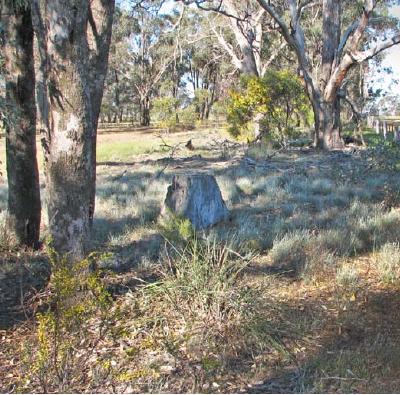The Importance of Native Vegetation on Roadsides
By Emerald Dunn

Good example of roadside vegetation. (photo by Murray Ralph)
Roadside vegetation has received a lot of heated debate recently with the severity of our bushfires reaching the official "catastrophic rating". Understanding how significant a roadside verge is, and when it may be appropriate to clean it up is complex.
Firstly let's look at the surrounding landscape. Is it cleared land for agriculture or industry? Is it on the edge of a recently degraded ecosystem that has been logged or burnt every few years? Or is it a small piece of remnant vegetation in a rural-residential area? In many cases, the loss of biodiversity in the areas surrounding roadside vegetation is very high due to a range of impacts. Due to this roadside verges often have flora species that are not represented on the adjacent land or the surrounding area. Large old trees are also common on roadside verges, but scarce in the broader landscape.
Roadsides may also contain seeds of native species that may be dormant in the soil, waiting for the right conditions to sprout. Conditions that may not have occurred for over a decade due to drought, climate change, changes in the soil structure or biota, or even associations with other plants, organisms or fauna (who deliver seeds and nutrients to the soil). These seed banks can be used to secure the populations of plants and for future regeneration activities.
Native vegetation on roadsides can also prevent soil erosion, reduce storm water run-off and reduce fire fuel hazards. Disturbing the soil may lead to the introduction of weeds which once established are very difficult to remove. Many species of native grasses remain at a manageable height and do not dry out to the extent that occurs with exotic grasses. They also assist in preventing the spread of weeds such as gorse, blackberry, broom and phalaris, all of which are a major fire hazard.
Sticks, twigs and leaf litter is also termed 'Coarse Woody Debris' and is important for many Australian species of mammals, birds, insects and reptiles who use this habitat for nesting, shelter, foraging, food sources and to move around on the forest floor.
The North Central Catchment Management Authority (NCCMA) has published 'Guidelines for Managing Roadsides." These guidelines include seeking approval and advice from relevant authorities if you need to undertake works on your roadside. The first contact is your local council. Other guidelines include reporting weeds, pest animals and illegal disturbance to roadside vegetation.
In some cases signs have been erected to identify areas where there are rare or threatened species these include: 'Significant Native Vegetation', 'Significant Roadside Area' or 'Biosite' signs. Not all areas of significance have been signed accordingly so it is best to make sure. You may need a planning permit to undertake works on the roadside and there is legislation in place to protect these areas including:
- Flora and Fauna Guarentee Act 1988
- Planning and Environment Act 1987
- Environment Protection and Biodiversity Conservation Act 1999
- Catchment and Land Protection Act 1994
- Country Fire Authority Act 1958
References:
Guidelines for managing roadsides (NCCMA)
Protection of native Vegetation on roadsides (Native Vegetation Steering Group)
